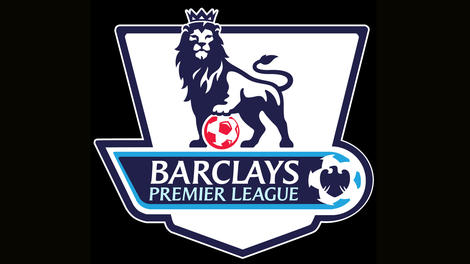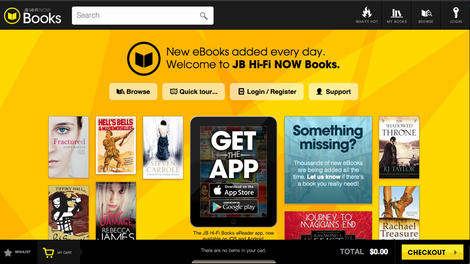
Aussie Apple iPhone 6S Plus plans
With the Apple iPhone 6S and iPhone 6S Plus now available for pre-order and all set for launch on September 25, questions have moved from "when can I get it?" to "how much will I pay?"
And while we know that the iPhone 6S Plus can be purchased outright for $1,229 for 16GB, $1,379 for 64GB or $1,529 for 128GB, the telcos have since announced their contract offerings for the new plus-sized Apple handset.
Over the next few pages, we've broken down the pricing offerings firstly by the phone's storage capacity, and then by telco.
Each plan's pricing is the total for the plan and the handset repayment.
16GB iPhone 6S Plus
Telstra
Getting your hands on the bigger iPhone through the nation's largest carrier isn't the cheapest way to get your iOS 9 fix.
Telstra's plans start at $95 a month for 24 month, including 1GB of data and $550 worth of talk time. If the paltry 1GB of data doesn't cut it for you, the next plan up brings the bundled data to 2.5GB, with an included $1,000 worth of talk time for $102 a month.
Moving up to the larger plans, $118 per month will get you unlimited talk plus 6GB of data (7GB if you get in early for the bonus data offer), while the biggest plan includes 10GB (or 15GB with bonus data) and unlimited talk for $150 a month.
Optus
Optus' starting plans are significantly cheaper for the iPhone 6S Plus, woth $79 a month including unlimited talk and text plus 500MB of data.
If you want gigabytes of data, you'll need to spend at least $88 per month, which delivers 3GB, up to 150 minutes of international phone calls plus unlimited talk and text.
$94 a month will double the data to 6GB a month, double the International calls to 300 minutes and maintains the unlimited talk and text (you can't really double unlimited now, can you?)
For $108 a month with Optus, things start getting interesting. International calls jump to 400 minutes, plus you get 12GB of data (10GB plus 2GB bonus). Naturally, unlimited talk and text are included.
The top of the line Optus offering – and the first that includes the 16GB iPhone 6 Plus for "free" with the plan – costs $135 a month and offers 20GB of data (16GB plus 4GB bonus), up to 500 minutes of international talk time, unlimited talk and text and a bonus of up to 10 days of Optus Travel packs.
Vodafone
Vodafone's 16GB offerings start at $87 a month, with the standard 500MB of data doubled to 1GB for the plan. Vodafone offers unlimited talk and text on all its plans, and also offers its $5 a day roaming offering.
For an extra $6 a month at $93, you'll get 3GB of data for your troubles, 120 minutes of international calls and unlimited talk and text, plus the $5 roaming offer.
$97 a month will earn you 8GB of data (6GB plus a bonus 2GB if you sign up before November 3), and then includes unlimited standard calls to 10 selected countries on top of the 120 minutes. $5 roaming comes in standard too.
Pumping the repayments up to $110 a month sees you inherit the same plan as the $97 offering, except with 12GB of data to play with each month (10GB plus a bonus 2GB for signing up before November 3).
And if 12GB isn't enough data for you each month, why not go for 20GB (15GB included, plus a bonus 5GB for signing up before November 3). $130 a month and it's all yours.
Virgin Mobile
Virgin has the cheapest offering when it comes to the 16GB iPhone 6S Plus. For $67 a month you get a shiny new handset, $300 worth of talk and text and 300MB of data.
For $79 a month, you'll get $450 worth of talk and text plus 1GB of data. Or for the same price on the same network for the same amount of money, you can get $500 worth of talk and text and 2GB of data. (Yeah, we think something might be broken on the Virgin site here).
$88 a month gets you unlimited talk and text with 4GB of data, but spend an extra $1 (to $89 a month), and you'll find yourself with unlimited talk and text and 6GB of data.
If you need more data than that, $93 a month gives you unlimited talk and text and 9GB of data.
And for the heaviest of data users, Virgin delivers unlimited talk and text plus 13GB of data each month on a fresh iPhone 6S Plus for $100 a month.
64GB iPhone 6S Plus
Telstra
Bumping the iPhone 6S Plus up to 64GB naturally boosts the Telstra pricing up too. The small plan , with $550 worth of talk and text and 1GB of data starts at $102 over 24 months.
$109 a month will buy you $1,000 of talk and text, plus 2.5GB of monthly data. For $125, you'll get unlimited talk and text and 7GB of data (6GB plus 1GB bonus).
And if you're a data hog, $157 a month buys you unlimited talk and text plus 15GB of data (10GB plus 5GB bonus each month).
Optus
Want 64GB in your iPhone 6S Plus from Optus? You'll be dropping a minimum of $85 a month. For that you'll get just 500MB, plus unlimited talk and text.
Pump those repayments up to $94 a month and enjoy 3GB of data, unlimited talk and text and up to 150 minutes of international calls each month.
$100 a month will buy you 6GB of data, unlimited talk and text plus 300 international minutes, while $115 gets you the same unlimited talk and text plus 400 international minutes and 12GB of data (10GB plus a bonus 2GB).
The truly data hungry will need to drop $142 a month, with 20GB (16GB plus a bonus 4GB) of data accompanied by unlimited talk and text, up to 500 international minutes and a bonus Optus travel pack.
Vodafone
Voda's entry level offering for the 64GB iPhone 6S Plus offers a decent 1GB of data (500MB plus 500MB bonus) for $93 a month, which also includes unlimited talk and text plus Voda's $5 roaming.
But knocking up the payments to $98 a month lands you a respectable 3GB of data, unlimited national talk and text and 120 standard international minutes as well.
$103 a month will deliver the 64GB phone with 8GB of data (6GB plus 2GB bonus), plus the $5 roaming and 120 international minutes and unlimited talk and text.
The final two Vodafone plans keep all the same trimmings, but include 12GB (10GB plus 2GB bonus) and 20GB (15GB plus 5GB bonus) for $115 a month and $134 a month respectively.
Virgin Mobile
Virgin's plans for the 64GB iPhone 6S Plus model are all fairly closely priced, but with a wide-ranging set of inclusions.
$73 a month includes $300 of talk and text and 300MB of data. $85 a month bumps that up to 1GB and $450 of talk and text.
But for an extra $1 (or $86), you'll get $500 of talk and text and 2GB of data. $94 a month shifts to unlimited talk and text, plus 4GB of data, while an extra $2 boosts that data to 6GB a month.
$99 a month has 9GB of bundled data alongside unlimited talk and text, while $106 a month will give 13GB of downloads and unlimited talk and text each month.
128GB iPhone 6S Plus
Telstra
If you need a lot of space but a small amount of data and want to use Telstra's 4GX network, then the smallest amount of cash you'll be paying is $112 a month. For that, you get 1GB of data, $550 worth of talk and text and the handset, of course.
If you're willing to spend $118 a month, then you can get the 128GB handset with 2.5GB per month and $1,000 worth of talk and text.
If decent data is a prerequisite, you'll need to spend at least $135 a month. That will get you 7GB of data (6GB plus a bonus gig) and unlimited talk and text.
And for the heaviest users, Telstra offers 15GB (10GB plus 5GB bonus) with unlimited talk and text on a $165 a month plan.
Optus
The Optus plans for a 128GB iPhone 6S Plus start at $91 a month. You'll get a fairly restrictive 500MB of data every month, but unlimited talk and text in Australia.
Upping your repayment up to $100 a month will give you a full 3GB of data and up to 150 minutes of International calls in addition to the unlimited national talk and text.
At $107 a month, you'll get 6GB of data, unlimited talk and text and up to 300 minutes of international calls. But an extra $15 a month on top of that will double the data to 12GB (10GB plus 2GB bonus data) and 400 minutes of international talk time.
The top of the line Optus plan for the 128GB iPhone 6S Plus comes in at $149 a month, and gives users 20GB of data (16GB plus 4GB bonus), unlimited talk and text, 500 minutes of International calls and the bonus of up to 10 days of Optus travel Packs.
Vodafone
The entry level plan for Vodafone customers wanting the largest capacity of iPhone 6S will set you back $98 a month, a plan that incorporates 1GB of data (500MB plus 500MB bonus), along with unlimited talk and text and access to Vodafone's $5 roaming offer.
Of course, with a phone that big, most people will need a larger data plan. The next step up delivers 3GB of data each month, unlimited talk and text and $5 roaming, plus 120 standard international minutes to selected countries. All for $109 a month.
8GB of data (6GB plus 2GB bonus) is included in the $110 per month plan, which improves the international call offering to unlimited for calls to 10 selected countries, plus 120 minutes to others. It also includes the unlimited talk and text in Australia and $5 roaming deal.
The next two plans are identical to the $110 a month plan, except with bigger and bigger data offerings. For $121 a month you'll get 12GB of data to use (10GB plus 2GB bonus), while $140 a month will deliver a massive 20GB of data (15GB plus a bonus 5GB).
Virgin Mobile
It's actually quite amazing that you can grab a 128GB version of the iPhone 6S Plus for $79 a month. Admittedly you only get 300MB of data and $300 worth of talk and text, but still, it's a decent way to get the top of the line Apple smartphone.
Of course, if you want to actually use the device, you'll need to pay up at least $91 a month, which delivers $450 worth of value and 1GB of data.
An extra buck (or $92 a month) will double that data to 2GB, as well as boosting the talk and text value to $500. But start paying $100 a month and you'll get unlimited talk and text plus 4GB of data each month.
The next three plans all offer unlimited talk and text, but with varying quantities of data. At $102 a month you'll get 6GB of data to use every month, $105 a month delivers 9GB and $112 a month gives 13GB of data to use.























